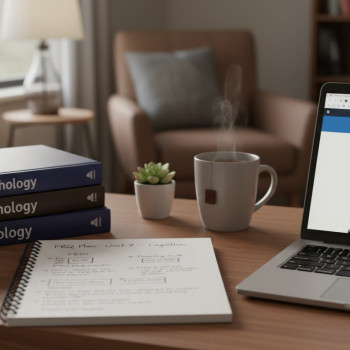Why this Matrix Matters: Bridging Two Worlds of Rigour and Application
Students and parents often ask: “How does what I learn in IB Math relate to AP Calc or AP Stats?” The short answer is: a lot — but the way topics are packaged, assessed, and applied can differ. This blog is a practical, topic-by-topic matrix that maps IB Math (both Analysis and Approaches — AA — and Applications and Interpretation — AI) to AP Calculus (AB/BC) and AP Statistics. Expect clear comparisons, study strategies, sample learning sequences, and a realistic approach to exam preparation. I’ll also sprinkle in actionable tips about using personalized tutoring — for example, how Sparkl’s 1-on-1 guidance and tailored study plans can help plug gaps efficiently — but only where it naturally fits the advice.

How to Use This Guide
Read this matrix as both a compass and a map. If you’re a student taking IB Math AA but considering Ap Calc or AP Stats for college credit, scan the sections that match your current syllabus. Parents: focus on the study pathways and realistic timelines. Teachers and tutors can use the table and sample study plans to align lessons to students’ longer-term goals. Wherever you see an area that feels weak, targeted, personalised help — like Sparkl’s expert tutors and AI-driven insights — can drastically reduce wasted study time and keep momentum high.
Important framing points
- IB AA vs IB AI: AA is more theoretical and proof-oriented with emphasis on algebra, calculus, and rigorous methods. AI is more applied, with technology and modeling central to the course.
- AP Calculus AB/BC: Focuses on limits, derivatives, integrals (AB), and extends to series and advanced techniques in BC.
- AP Statistics: Emphasizes data collection, analysis, probability, and inference — more aligned with applied modeling and interpretation than with symbolic calculus.
- Overlap is meaningful: algebra, functions, interpretation of results, and modeling skills are shared across all four courses.
Topic-by-Topic Matrix: IB Math AA/AI Compared to AP Calc and AP Stats
The table below gives a condensed view of how individual topic areas line up. After the table, we’ll unpack key overlaps, differences, and study strategies.
| Topic Area | IB Math AA (Emphasis) | IB Math AI (Emphasis) | AP Calculus AB/BC (Emphasis) | AP Statistics (Emphasis) |
|---|---|---|---|---|
| Functions and Graphs | Rigorous analysis of functions, transformations, composition. | Practical use of functions for modeling; technology-supported graphs. | Functions as groundwork for limits and derivatives. | Functional form used for modeling relationships and transformations. |
| Algebra and Manipulation | Strong symbolic skills and manipulation for proofs and calculus. | Algebra applied in modeling; calculators used for simplification. | Essential for solving derivatives, integrals, and solving equations. | Used for transformations, regressions, and probability models. |
| Limits and Continuity | Introduced rigorously, with epsilon-delta ideas sometimes touched on. | Less formal; focus on practical behavior of functions. | Core AB/BC topic; foundation for derivatives and integrals. | Rarely central; continuity may appear in model assumptions. |
| Differentiation | Core — rules, proofs, applications in optimization. | Applied viewpoints: rates of change in context-driven problems. | Core — techniques, applications (tangent lines, optimization). | Less common — occasionally used to explain change concepts in models. |
| Integration | Core — definite and indefinite integrals, areas, volumes (AA HL deeper). | Applied: accumulation, area under curves in modeling contexts. | Core — antiderivatives, definite integrals, fundamental theorem of calculus. | Used for some continuous probability models but not central. |
| Series and Sequences | Covered (especially HL AA) — convergence theory and proofs. | Limited; sequences used in modeling and iterative processes. | BC covers Taylor series and convergence tests; AB minimal. | Generally not a focus. |
| Probability | Solid foundation; combinatorics and probability theory covered. | Strong emphasis — modeling real data and simulations. | Basic probability appears as groundwork for applications. | Core — distributions, expected value, conditional probability. |
| Statistics & Inference | Included but less central than AI; focus on reasoning and interpretation. | Central — descriptive stats, inference, technology-based analysis. | Less coverage; some applied statistics problems in calculus contexts. | Core — sampling, tests, confidence intervals, regression. |
| Modeling | Emphasizes analytical models and exact solutions. | Emphasizes contextual, data-driven, and tech-enhanced modeling. | Applied problems—modeling motion, growth, decay, etc. | Extensive — building, validating, and interpreting models. |
Unpacking the Matrix: What Students Really Need to Know
The table is useful for quick comparison, but learning is messy and personal. Below I translate those rows into practical advice by topic, with example tasks and how to sequence study.
Functions, Algebra, and Graphical Fluency
Why it matters: Functions are the language of both calculus and statistics. If you can comfortably manipulate polynomials, exponentials, logarithms, trig functions, and translate between equations and graphs, you’ll sail through the early weeks of any course.
- IB AA students should practice rigorous manipulation and try proving simple identities — it builds deep understanding for calculus proofs.
- IB AI students should focus on real-world function choices (e.g., logistic vs exponential) and use tech to visualize fits.
- AP Calc students: translate graphs to derivatives; practice sketching f, f’, f” relationships.
- AP Stats students: get fluent in scatterplots, transformations (log, square root) and what they mean for linear modeling.
Limits, Continuity, and the Birth of Calculus
Limits are the bridge to derivatives and integrals. IB AA will often give you more theoretical depth; AP Calculus focuses on computation and conceptual mastery needed for problem solving.
- Study tip: When approaching limits, alternate between algebraic manipulation and numerical/graphical exploration — both are powerful.
- Practice: Sketch a function with removable vs essential discontinuities and explain behavior of limits from left and right.
Differentiation and Integration — Tools for Change and Accumulation
These are the heart of AP Calculus and a major component of IB AA. IB AI will address them through applied contexts; AI students benefit from calculator use for numerical approximation.
- Work on derivative rules until they feel automatic; then solve applied problems (optimization, related rates).
- Integration demands both technique and interpretation — definite integrals as areas and accumulated change is a concept that ties to statistics via continuous distributions.
- For BC students, sequence practice for advanced techniques: integration by parts, partial fractions, and series approximations.
Statistics and Probability — Where AI and AP Stats Shine
IB AI and AP Stats align closely. If you’re an IB AA student curious about AP Stats, here’s your head start: strengthen understanding of sampling, bias, descriptive metrics, and how to interpret confidence levels and p-values.
- Practice building hypotheses from real questions (e.g., does study time correlate with test improvement?).
- Use technology: simulations and resampling are powerful to build intuition about sampling distributions.
Sample Study Pathways: How to Pivot Between Curricula
Below are sample pathways for three common student scenarios. Each plan assumes a semester of deliberate study (roughly 12–16 weeks) and prioritizes concept mastery before timed practice.
Scenario A — IB AA Student Taking AP Calculus
- Weeks 1–4: Consolidate functions, limits, continuity. Emphasize rate of change and instantaneous slopes.
- Weeks 5–9: Intensive differentiation practice (rules, applications) and begin basic integration concepts.
- Weeks 10–12: Integrals, the Fundamental Theorem, area and volume problems. Timed practice with past AP questions.
- Final 2–4 weeks: Mixed problem sets, error analysis, and targeted tutoring for weak spots. Consider 1-on-1 help like Sparkl’s to tailor final weeks into a focused plan.
Scenario B — IB AI Student Considering AP Stats
- Weeks 1–3: Strengthen descriptive statistics and data visualization skills.
- Weeks 4–7: Probability foundations and distributions (binomial, normal) — simulation practice.
- Weeks 8–11: Significance testing, confidence intervals, regression and inference.
- Final weeks: Practice FRQ-style questions, build a cheat-sheet of interpretation heuristics, and run mock testing under timed conditions.
Scenario C — AP Student Wanting IB Depth (AA or AI)
- AP Calc students leaning AA: deepen proofs, sequence convergence, and theoretical justification for techniques. Add problem sets that require reasoning, not just computation.
- AP Stats students leaning AI: expand real-world modeling, learn to use CAS or graphing calculators for complex fits, and practice extended response questions that discuss model limitations and assumptions.
How to Practice Effectively: From Problems to Patterns
Practice intentionally. Here’s a compact framework that converts hours into meaningful progress:
- Learn the concept: Read one explanation; summarize it in your own words (no copying).
- Guided practice: Work 5–10 problems with a solution nearby — aim to understand method and errors.
- Independent practice: Solve 10–15 problems without a solution; mark mistakes and classify them.
- Reflection: For each mistake, write a 1–2 sentence diagnosis and a correction strategy.
- Mixed review: Weekly, do a mixed set across topics to strengthen retrieval and transfer.
Leverage Technology, But Don’t Lean On It
IB AI encourages thoughtful use of calculators and software; AP exams limit certain calculator use in sections. Use tech to visualize and test hypotheses, but practice doing core calculations by hand where appropriate — it builds intuition and avoids surprises on exams.
Sample Topic Drill: Connecting a Single Concept Across Curricula
Let’s take linear regression as an example to show how one topic appears in each curriculum and how to study it effectively.
- IB AI: Model selection, residual analysis, interpretation of coefficients in context, and use of technology to compute fits.
- IB AA: Less emphasis, but you should understand least squares derivation and algebraic formulation if taking HL.
- AP Statistics: Core topic — computing and interpreting slope/intercept, r, r^2, and inference about slope.
- AP Calculus: Regression appears in applied contexts, e.g., using integrals to find areas under fitted curves or rates derived from models.
Study tip: Collect a dataset (school sports stats, environmental data, anything interesting). Walk the process: visualize, fit, interpret coefficients, test assumptions, and write a 200-word conclusion explaining limitations. This ties together AI’s applied focus and AP Stats’ inference structure.
Assessment Strategy: Homework vs Exam vs Real-World Mastery
Scoring well on exams is necessary, but true mastery comes from being able to apply concepts. Break your assessments into three layers:
- Formative (homework/quizzes): Focus on breadth and identifying poor habits.
- Summative (mock exams): Practice exam pacing, format, and stamina.
- Applied (projects): Build or interpret models, write clear explanations, and test robustness. These are gold for IB Internal Assessments and college preparedness.
Time Management and Stress: Practical Tips
Preparing for AP and IB simultaneously (or transitioning between them) can be stressful. Here are compact strategies that work:
- Block study: 50 minutes focused, 10 minutes break. Repeat three times then longer rest.
- Weekly review: 60–90 minutes on Sunday to re-visit errors and conceptual blind spots.
- Mock timing: Replicate exam timings to train pacing and reduce test-day anxiety.
- Small wins: Start each session with a problem you enjoy — confidence compounds.
- Tutoring as efficiency: When gaps persist, targeted 1-on-1 tutoring (for example, Sparkl’s tailored sessions and AI-driven insights) can drastically shorten the time needed to reach competency.
What Parents Can Do to Support
Support looks like structure, not pressure. Create a steady study environment, help maintain consistent sleep and nutrition, and encourage reflection on mistakes rather than punishment for them. Practical help might include organizing a weekly planner, arranging periodic tutoring sessions, or funding a focused review month before exams.
Realistic Expectations and Exam Selection Advice
Choose exams aligned with your strengths and college goals. If you love proofs and theory, IB AA or AP BC might suit you. If you prefer data, context, and application, IB AI and AP Stats are excellent. Colleges value both depth and demonstrated mastery. Remember: quality beats quantity — a well-scored single AP or a strong IB HL result can be more impactful than many half-prepared attempts.
Final Checklist Before Exam Day
- Know the format: Sections, calculator policy, and timing.
- Master core procedures: Derivative rules, integration techniques, inference steps for stats.
- Do at least three full timed practice exams in the month before the real one.
- Review common FRQ prompts and practice clear, concise explanations — scholarship readers reward precision.
- Plan logistics: What to bring, arrival time, and pre-test routine (sleep, food, light exercise).

Parting Thought: Build Transferable Math Confidence
Whether you’re bridging IB Math AA/AI to AP Calculus or AP Statistics, view the courses as tools in the same toolkit. The deeper aim is mathematical maturity: being able to model a problem, choose an approach, execute accurately, and explain results clearly. If you hit obstacles, targeted personalised tutoring — the sort that offers 1-on-1 guidance, tailored study plans, and expert tutors with insight into both curricula — is not a shortcut; it’s smart use of resources. With focused work, consistent reflection, and the right supports, you can turn curriculum differences into strengths and own both exams.
Need a Customized Roadmap?
If you want a topic-by-topic study planner tailored to your current scores, time available, and target schools, consider a short diagnostic and a bespoke study plan. A few weeks of guided, focused study often yields more improvement than months of unfocused work — especially when it’s personalized.
Good luck — stay curious, practice deliberately, and remember: math skills are portable. The effort you invest now opens doors in science, economics, technology, and beyond.

















No Comments
Leave a comment Cancel